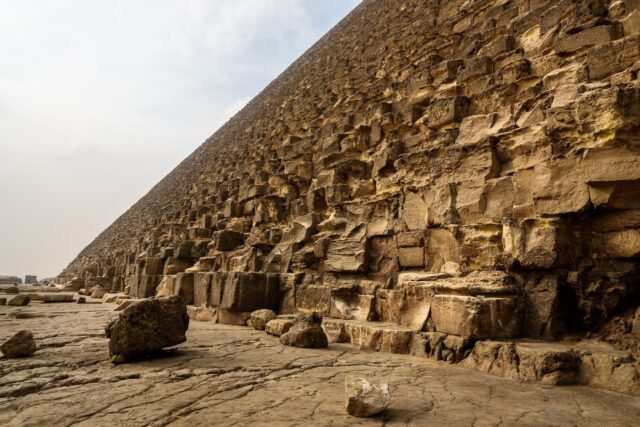The mystery of how the ancient Egyptians built their pyramids has stumped historians for centuries. Different theories emerged over the years, ranging from aliens to internal ramps. Recently a research team made a huge discovery that takes us one step closer to understanding how the Great Pyramid of Giza was built. The secret? A part of the Nile that dried up thousands of years ago.
Great Pyramid of Giza

The Great Pyramid of Giza is the largest ancient Egyptian pyramid. It’s believed to have been built around 2600 BC. Construction took 27 years, with the structure intended to be the tomb of Pharaoh Khufu. The Great Pyramid is made up of approximately 2.3 million limestone and granite blocks that weigh two tons each.
As leading archeologist Dr. Laila Hassan explains, building the Great Pyramid would have required a lot of resources and the guidance of experienced engineers.
It all started with a papyrus

The idea for the research project started with the discovery of a papyrus in the Red Sea. It’s a detailed record of an officer named “Merer,” who was tasked with moving limestone up the Nile to the construction site in Giza. The papyrus immediately interested Hader Sheisha, one of the researchers behind the recent discovery. It confirms the materials used to construct the Great Pyramid were moved over the water of the river.
The team then came up with a hypothesis, which theorized that the ancient Egyptians used waterways that connected to the Nile as tributaries to transport the giant stones that make up the Great Pyramid. However, for this to be true, there would have had to have been a waterway around the site.
To look for this waterway, the researchers dug 30 feet down to collect five fossilized samples of ancient soil from Giza’s floodplain. The samples were analyzed in a French laboratory for signs of ancient pollen and vegetation native to the Nile, which would prove there was a waterway connected to the Nile that flowed through the area.
Building materials were moved over water

The analysis showed traces of the Khufu Branch, an ancient tributary of the Nile that supposedly dried up around 600 BC. Back when the Great Pyramid of Giza was built, some 4,600 years ago, the position of this tributary and the higher water levels in the river made moving the materials needed for the Giza Pyramid Complex much easier.
In brief, the Nile acted like a natural conveyor belt. Just like the Red Sea papyrus suggested, building materials were moved over water.
More from us: 120-Year-Old Hidden Chamber Discovered Beneath Washington, DC’s National Mall
Want to become a trivia master? Sign up for our Today In History newsletter!
This huge discovery finally provides a believable explanation for how the Great Pyramid of Giza was built. It also give us a glimpse into how resourceful a civilization the ancient Egyptians were. They used the natural waterscape to build what is now the oldest of the Seven Wonders of the Ancient World.
